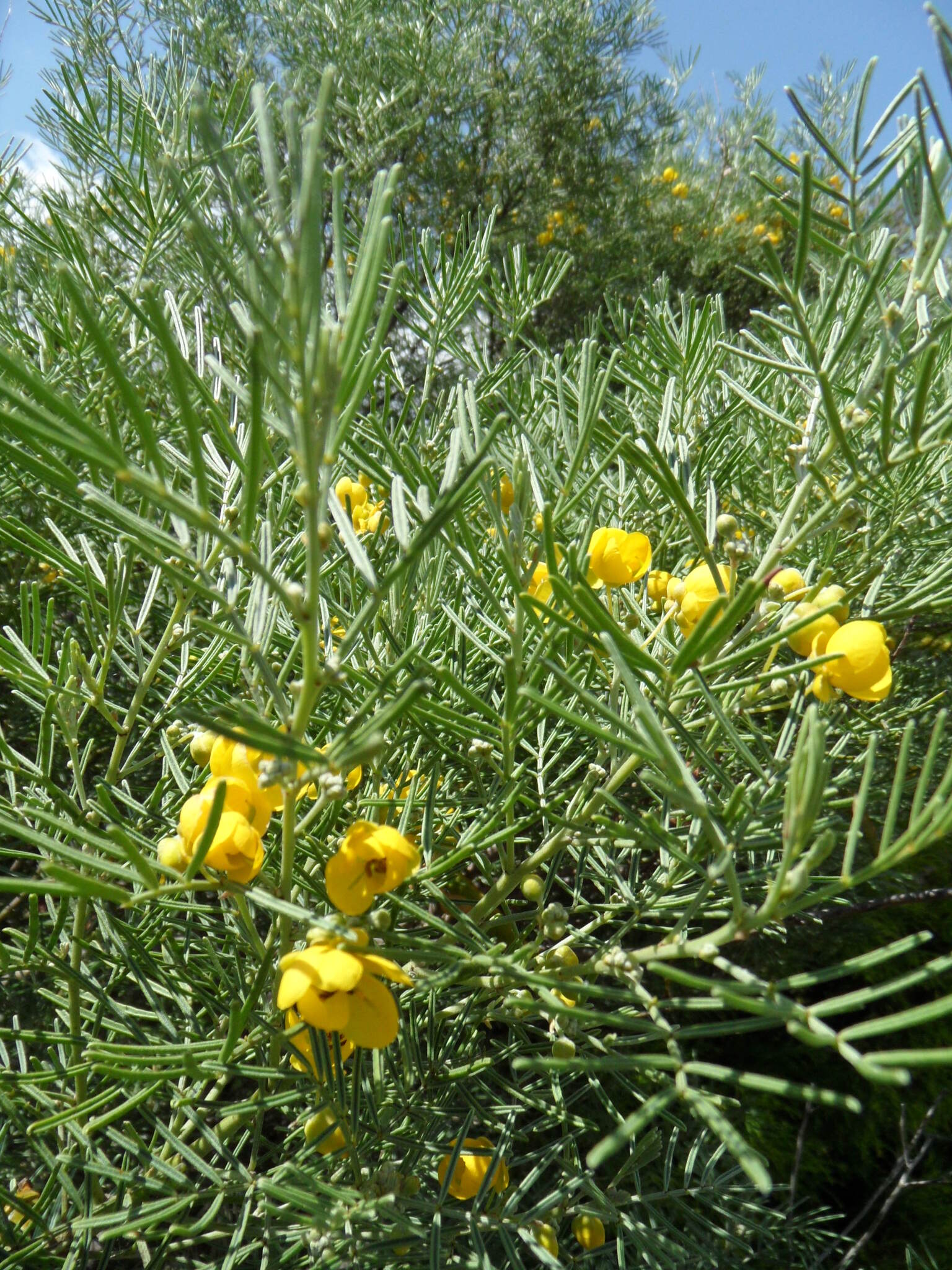
From the Arabic sana, for species which have cathartic and laxative properties.
Mostly thornless shrubs, rarely trees or perennial herbs. Leaves alternate, odd-pinnate, often glandular; stipules soon shed. Leaflets of 1-25 pairs. Flower clusters axillary. Flowers slightly irregular. Sepals 5. Petals 5, spreading. Stamens and staminodes 10, anthers dehiscing by terminal pores. Fruit pods leathery and dehiscent or woody and indehiscent, sometimes with partitions between the seeds.
As a result of recent revision, most plants in Australia formerly placed in the genus Cassia are now in Senna.
S. pleurocarpa (F. Muell.) Randell, Fire Bush, from WA, SA, NT, Qld and NSW (unlike most native species) has several sterile stamens. However, it differs from exotic species in having no leaf glands and flat pods. Leaflets in 5-9 pairs.
About 350 species; widespread in S and C America, S Africa and Australia (46 species).
Seed.
Many species have medicinal uses or are used as green manure, for timber, as a source of dyes or as a coffee substitute.
Differs from Cassia in having the filaments of all stamens straight or curved (not S-shaped), not more than twice as long as the anthers or if so, the anthers opening by pores.
Irwin &Rogers (1967, 1977), Gordon-Gray &Schorn (1975), Irwin &Barneby (1982), Randell (1988, 1989, 1990).
Source: (2002). Caesalpiniaceae. In: . Horticultural Flora of South-eastern Australia. Volume 3. Flowering plants. Dicotyledons. Part 2. The identification of garden and cultivated plants. University of New South Wales Press.
